JAJSEF5L July 2012 – May 2019 LP8556
PRODUCTION DATA.
- 1 特長
- 2 アプリケーション
- 3 概要
- 4 改訂履歴
- 5 Device Options
- 6 Pin Configuration and Functions
-
7 Specifications
- 7.1 Absolute Maximum Ratings
- 7.2 ESD Ratings
- 7.3 Recommended Operating Conditions
- 7.4 Thermal Information
- 7.5 Electrical Characteristics
- 7.6 Electrical Characteristics — Boost Converter
- 7.7 Electrical Characteristics — LED Driver
- 7.8 Electrical Characteristics — PWM Interface
- 7.9 Electrical Characteristics — Logic Interface
- 7.10 I2C Serial Bus Timing Parameters (SDA, SCL)
- 7.11 Typical Characteristics
-
8 Detailed Description
- 8.1 Overview
- 8.2 Functional Block Diagram
- 8.3
Feature Description
- 8.3.1 Boost Converter
- 8.3.2 Brightness Control
- 8.3.3 Fault Detection
- 8.4 Device Functional Modes
- 8.5 Programming
- 8.6
Register Maps
- 8.6.1 Register Bit Explanations
- 8.6.2
EPROM Bit Explanations
- 8.6.2.1 LP8556TM (DSBGA) Configurations and Pre-Configured EPROM Settings
- 8.6.2.2 LP8556TM (DSBGA) Configurations and Pre-configured EPROM Settings Continued
- 8.6.2.3 LP8556SQ (WQFN) Configurations and Pre-configured EPROM Settings
- 8.6.2.4 CFG98
- 8.6.2.5 CFG9E
- 8.6.2.6 CFG0
- 8.6.2.7 CFG1
- 8.6.2.8 CFG2
- 8.6.2.9 CFG3
- 8.6.2.10 CFG4
- 8.6.2.11 CFG5
- 8.6.2.12 CFG6
- 8.6.2.13 CFG7
- 8.6.2.14 CFG9
- 8.6.2.15 CFGA
- 8.6.2.16 CFGE
- 8.6.2.17 CFGF
- 9 Application and Implementation
- 10Power Supply Recommendations
- 11Layout
- 12デバイスおよびドキュメントのサポート
- 13メカニカル、パッケージ、および注文情報
パッケージ・オプション
メカニカル・データ(パッケージ|ピン)
サーマルパッド・メカニカル・データ
- RTW|24
発注情報
9.2.3 Application Curves
Unless otherwise specified: VIN = 3.8 V, CVLDO = 10 μF, L1 = 4.7 μH, CIN = 2.2 μF, COUT = 4.7 μF, ƒSW = 1.25 MHz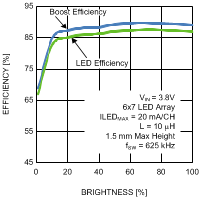 Figure 20. Boost and LED Drive Efficiency
Figure 20. Boost and LED Drive Efficiency 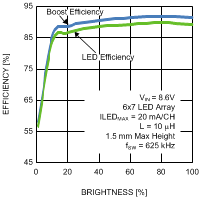 Figure 22. Boost and LED Drive Efficiency
Figure 22. Boost and LED Drive Efficiency 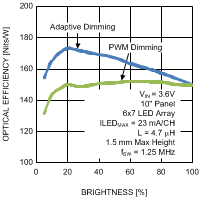 Figure 24. Optical Efficiency
Figure 24. Optical Efficiency 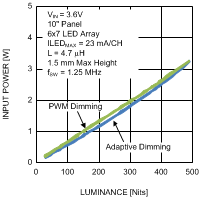 Figure 26. Input Power as a Function of Brightness
Figure 26. Input Power as a Function of Brightness 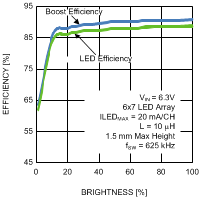 Figure 21. Boost and LED Drive Efficiency
Figure 21. Boost and LED Drive Efficiency 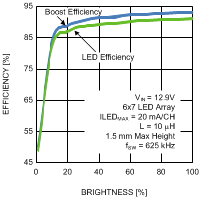 Figure 23. Boost and LED Drive Efficiency
Figure 23. Boost and LED Drive Efficiency 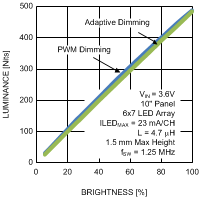 Figure 25. Luminance as a Function of Brightness
Figure 25. Luminance as a Function of Brightness 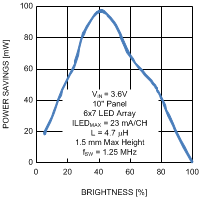 Figure 27. Power Savings With Adaptive Dimming when Compared to PWM Dimming
Figure 27. Power Savings With Adaptive Dimming when Compared to PWM Dimming